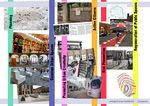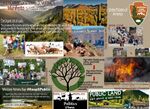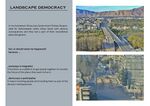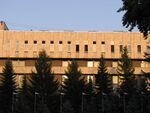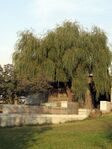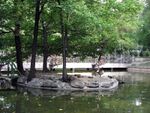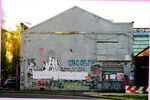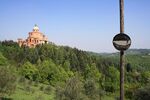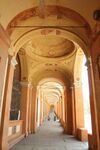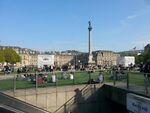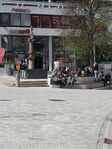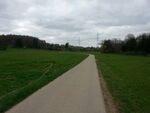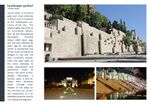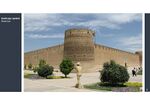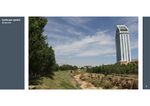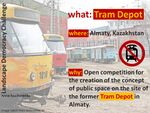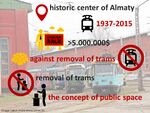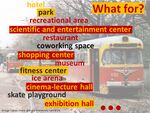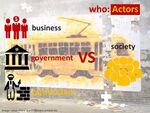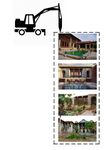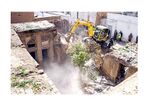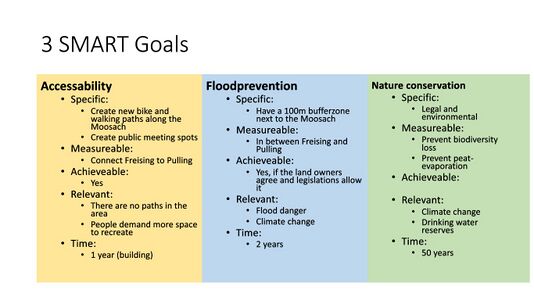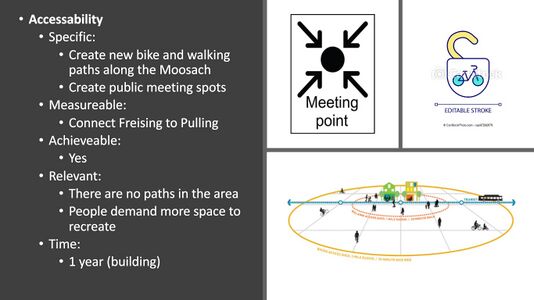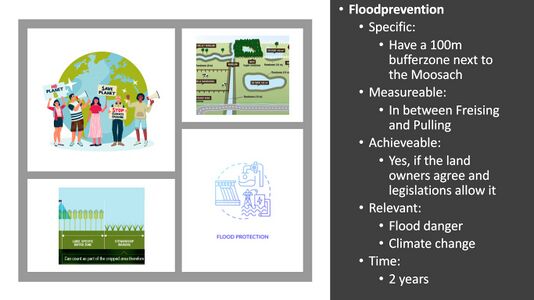LED Online Seminar 2017 - Working Group 11
--> Back to working group overview
Dear working group members. This is your group page and you will be completing the template gradually as we move through the seminar. Good luck and enjoy your collaboration!
Assignment 1 - Reading and Synthesizing Core Terminology
- You can read more details about this assignment here
- Readings are accessible via the resources page
Step 1: Your Landscape Democracy Manifestoes
Step 2: Define your readings
- Please add your readings selection for the terminology exercise before April 12:
A: Landscape and Democracy - Mapping the Terrain
Landscape Concepts:
- Anna Ilyuchshenko: Antrop, Marc; Kühne, Olaf (2015) Concepts of Landscape, in: Landscape Culture - Culturing Landscapes. The Differentiated Construction of Landscapes (Bruns, Kühne, Schönwald, Theile ed.)
- Gaia Uguccioni: Sieverts, Thomas (2003): Cities without cities. An interpretation of the Zwischenstadt. English language ed. London: Spon Press
B: Concepts of Participation
- Maggie Weber: Arnstein, Sherry R.(1969): A Ladder of Citizen Participation, JAIP, Vol. 35, No. 4
- Yasaman Rahimi: Day, Christopher (2002): Consensus Design, Architectural Press
C: Community and Identity
- Maggie Weber: Hester, Randolph (2006): Design for Ecological Democracy, The MIT Press
- Yasaman Rahimi: Welk Von Mossner, Alexa (2014): Cinematic Landscapes, In: Topos, No. 88, 2014.
D: Designing
- Anna Ilyuchshenko: Hester, Randolph: Democratic Drawing - Techniques for Participatory Design
- Gaia Uguccioni: Smith, Nicola Dawn(2012): Design Charrette: A Vehicle for Consultation or Collaboration
E: Communicating a Vision
Steps 3 and 4: Concepts Selection and definition
- Each group member selects three relevant concepts derived from his/her readings and synthesize them/publish them on the wiki by April 30, 2017
- Group members reflect within their groups and define their chosen concepts into a shared definition to be posted on the wiki by May 10, 2017.
- Other group members will be able to comment on the definitions until May 20, 2017
Concepts and definitions
Author 1: Anna Ilyuchshenko
- Concept 1: Concepts of Landscape
- The concept of the term landscape in different languages carries a different semantic load. The development of the concept of landscape is constantly going on, as well as its understanding.
- Concept 2
- A designer should take into account people and rely on the current situation of the population by designing a space. Often a difficult situation may be turned for the better simply by a new approach and design.
- Concept 3
- A simple drawing of the problem can help to find a solution to a seemingly difficult task. Designers use a vast variety of methods of drawing and they all achieve their goal.
Author 2: Gaia Uguccioni
- Concept 1: Rendering the Zwischenstadt
For a science to be considered as such, there is a need for a theoretical foundation. The identity of the zwischenstadt can be perceived, evaluated, recognized and also experienced differently. Is it possible to imagine the idea of a city created in a level of lived experience? (p. 49 Perspective and questions)
- Concept 2: Para-aesthetics
We must be able to account for the basic mechanisms that allow the generation of ideas in the human mind. Functions of tracing, noticing and perceiving have a particular importance in grasping the chaotic richness of form of the zwischenstadt. (p.53 The cultural and political dissolution of the city)
- Concept 3: Design consultancy
The resources of the modern community are human and social capital. They offer multiples not acquired skills, such intuition and judgment. (p.4 Design charrette: a design process)
Author 3: Margaret Weber
- Concept 1: Participation
There are different levels of citizen participation, ranging from nonparticipation (1), to degrees of tokenism (2), to degrees of citizen power (3). These categories can be broken down into the subcategories: (1) Manipulation, therapy, (2) informing, consultation, placation, (3) partnership, delegated power, and citizen control. Where people and communities fall on this list depends on the developers and planners, the organizers of the community participation forums, the local government, and the community.
- Concept 2: Division
Even while trying to promote citizen participation and improved community structure, divisions between the "haves" and the "have-nots" can form. This is most common in situations where groups with more influence and groups with little influence want use of the same space. Depending on what level of community participation is promoted, different voices may be louder and more influential than others.
- Concept 3: Democratic Environmental Design
Urban design must begin to focus on connecting individuals, communities, and nature in a sustainable and democratic way. Design principles to integrate ecology and democracy into cities include enabling form, resilient form, and impelling form. A design revolution must take place in order for cities to become a place of community, health and joy.
Author 4:Yasaman Rahimi
- concept 1:General agreement with whole situation in design
consensus design is happened when everybody be agreed with the building,the place and the function .hence, most of the people involved it,so it would be constructive and conscious.source:Day, Christopher (2002): Consensus Design, Architectural Press
- concept 2:Arrived at consensus
having a flexible mind instead of holding rigid belief and listening to variety viewpoint ,is play an vital role in achieving consensus.also public well being _ public interested_should take into consideration.source: Day, Christopher (2002): Consensus Design, Architectural Press
- concept 3:The significance of landscape in film
landscape and cinematic environment serves an important purpose in creating a film's mood and setting an atmosphere.in other words ,it gives meaning to cinematic events and positions. source:Welk Von Mossner, Alexa (2014): Cinematic Landscapes, In: Topos, No. 88, 2014.
Author 5:
- ......
- .......
- .......
Step 5: Reflection
- Please write, as a group, a 250 words reflection on your discourse and document it here
Step 6: Revised manifestoes
- please look again at your initial manifestoes and update them with any new aspects/prespectives you have taken up during this seminar
- Updatedmanifesto1.jpg
xy's updated manifesto
- Updatedmanifesto2.jpg
xy's updated manifesto
- Updatedmanifesto3.jpg
xy's updated manifesto
- Updatedmanifesto4.jpg
xy's updated manifesto
- Updatedmanifesto5.jpg
xy's updated manifesto
Assignment 2 - Your Landscape Symbols
- You can read more details about this assignment here
Landscape Symbols - Anna Ilyuchshenko
Landscape Symbols - Gaia Uguccioni
Hill after hill - After walking under the 666 arcades of the Monastery of San Luca, you can enjoy this view. You will be totally surrounded by nature and you really can appreciate the land in which Bologna is settled: different but always spectacular scenaries in which hills are running after themselves.
A step to San Luca - This peculiar portico was built at the end of the 17th centyry thanks to the contributions provided by all citizens. It still stands as the symbol of the civic and religious spirit of the people from Bologna and still now its restauration is promoted by initiatives of civil crowdfundings.
Landscape Symbols - Maggie Weber
Landscape Symbols - Yasaman Rahimi
- Symbol yourname photovoice4
add a caption (one paragraph max) description of the symbolism, interpretation, as well as geo-location
- Symbol yourname photovoice5
add a caption (one paragraph max) description of the symbolism, interpretation, as well as geo-location
Landscape Symbols Author 5
- Symbol yourname photovoice1
add a caption (one paragraph max) description of the symbolism, interpretation, as well as geo-location
- Symbol yourname photovoice2
add a caption (one paragraph max) description of the symbolism, interpretation, as well as geo-location
- Symbol yourname photovoice3
add a caption (one paragraph max) description of the symbolism, interpretation, as well as geo-location
- Symbol yourname photovoice4
add a caption (one paragraph max) description of the symbolism, interpretation, as well as geo-location
- Symbol yourname photovoice5
add a caption (one paragraph max) description of the symbolism, interpretation, as well as geo-location
Assignment 3 - Role Play on Landscape Democracy "movers and shakers"
- You can read more details about this assignment here
yasaman rahimi>: Lawrence (Larry) Halprin, (The RSVP cycle, Levi’s Plaza and Headquarters) Margaret Weber>: Paula Horrigan (Rust to Green)
Assignment 4 - Your Landscape Democracy Challenge
- You can read more details about this assignment here
- Each group member will specify a landscape democracy challenge in his/her environment
Landscape Democracy Challenge 1
- Tram Depot
Your references: http://www.kazpravda.kz/en/news/society/almaty-tram-depot-suspends-its-work/ http://www.urbansdgplatform.org/service/blog/17/155/postView.do
Landscape Democracy Challenge 2
- Palouse Trail
Your references:
- https://www.ci.moscow.id.us/records/Publications/PR%20Historical%20Guide%20Bill%20Chipman%20Palouse%20Trail.pdf
- http://inland360.com/kids/2013/05/a-guide-for-biking-the-bill-chipman-palouse-trail/
Landscape Democracy Challenge 3 (Yasaman Rahimi)
caption: what is the issue/conflict :preservation of historical building plays a cultural role .These architectural monuments cultivates pride of our past and they are great attractors of tourists. Everyone likes to experience the “spirit” of the city, which most often is represented through these historical building . unfortunately by destroying these building , The city is losing its identity
Your references:
- ...
- ...
Landscape Democracy Challenge 4 Gaia Uguccioni
- Strategic Healthcare
Your references:
- http://www.pesaroambiente.it/index.php?id=9820&type=98&cHash=5718af8c20&tx_ttnews[tt_news]=13424&tx_ttnews[backPid]=9744
- ...
Landscape Democracy Challenge 5
- Give a title to your challenge
- Yourname challenge 1.jpg
caption: why did you select this case?
- Yourname challenge 2.jpg
caption: what is the issue/conflict (1)
- Yourname challenge 3.jpg
caption: what is the issue/conflict (2)
- Yourname challenge 4.jpg
caption: who are the actors?
Your references:
- ...
- ...
Assignment 5 - Your Democratic Change Process
- You can read more details about this assignment here
- After documenting and reflecting on your challenges you will continue jointly with one of these challenges and design a democratic change process
Your Democratic Change Process
- Tram Depot, Almaty
Look at the various methods and tools available and think how they can be applied creatively. Think about the needs of different stakeholder groups - you may need a methodical mix to address them all. Illustrate graphically how these methods/tools might be applied in a short, medium and long-term perspective.
Reflection
- Evaluate in the group how far your ideas either built on the theoretical frame that has been introduced to you during this seminar or react to this by filling a potential gap (approx 150 words)
Your references
- Bruns, Diedrich, et al., eds. Landscape Culture-Culturing Landscapes: The Differentiated Construction of Landscapes. Springer, 2015
- Smith, Nicola Dawn(2012): Design Charrette: A Vehicle for Consultation or Collaboration
- ....

